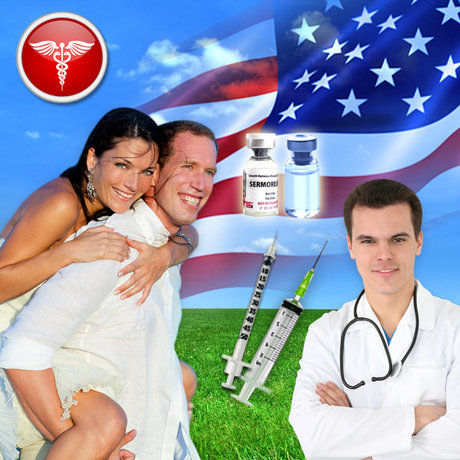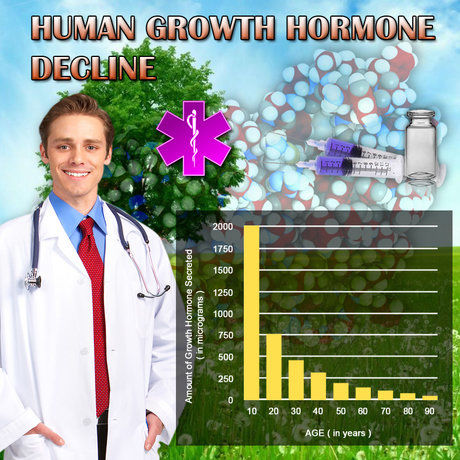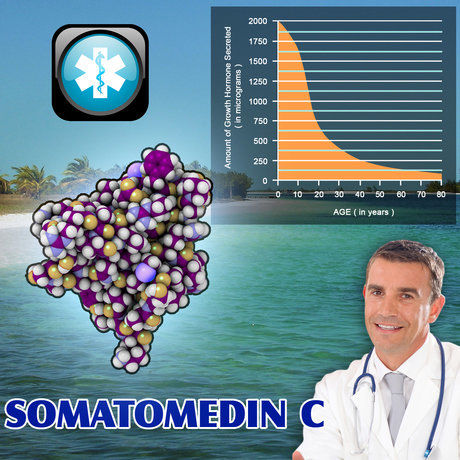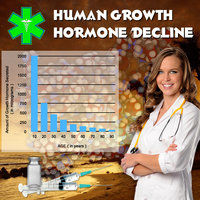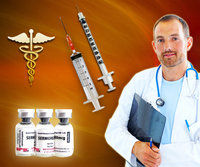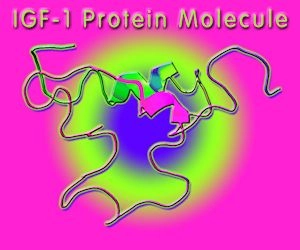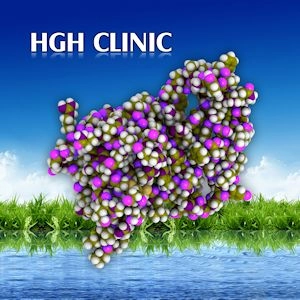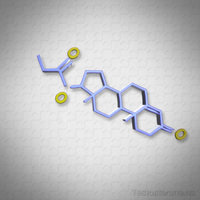Video Link: https://vimeo.com/293548256
Video Download: Stem Cells Found For The First Time In The Pituitary Part 1
Video Stream: Stem Cells Found For The First Time In The Pituitary Part 1
Video Link: https://vimeo.com/293548752
Video Download: Stem Cells Found For The First Time In The Pituitary Part 2
Video Stream: Stem Cells Found For The First Time In The Pituitary Part 2
In a ground-breaking new discovery, Stem Cells have been found within the Pituitary Gland
Science Daily
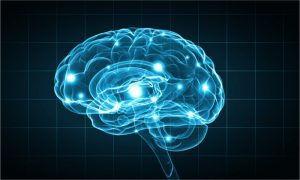 A group of scientific researchers who were under the guidance of the Cold Spring Harbor Laboratory have located stem cells within the brain that were at this point only theorized to exist.
A group of scientific researchers who were under the guidance of the Cold Spring Harbor Laboratory have located stem cells within the brain that were at this point only theorized to exist.
These cells are found within the pituitary gland and in animal testing have shown the capacity to encourage the pituitary glands of laboratory rats to grow and repair even beyond the period of fetal development.
Scientists have deduced that these stem cells are different than the majority of other stem cells in adults, and the stem cells within the mature pituitary gland are also unique from stem cells that develop into the pituitary in the womb.
This new discovery leads researchers to believe that the pituitary gland might even have the ability to alter its function in both adults and adolescents, adapting to traumatic physical and emotional stress as well as regular physiological occurrences such as menopause, puberty, and pregnancy.
The Search for Adult Stem Cells
Sadly, there are many ways in which coming to maturity leads to reduced possibility. As a fertilized zygote continues to undergo cellular division to develop into a complete animal, the majority of the cells go on a continuing path toward specialization, after which, they are intended for one purpose and one purpose only to contribute to the entirety of a living organism.
After the cells have been specialized, they have no method of change classification and help the body in other ways.
For cells like those in the brain, which have minimal ability to reproduce, this is a significant roadblock that prevents the body from recovering from many forms of traumatic brain injury, and the same affliction affects many other organs as well.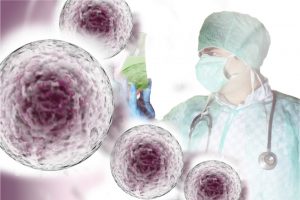
There is one class of cells in the mature body for which these laws of specialization do not apply, however.
These cells are called stem cells. This minority of cells can develop into a large number of different types of cells within the body, and some of these cells can transform into any cell that the human body can generate.
These stem cells, which have a strong ability for diversification, are harvested from embryos, which are only days old, that remain merely clumps of identical or nearly identical cells, which can eventually form a fully grown human being.
Where are Stem Cells Found?
These embryos are generally the result of in vitro fertilization and are provided by physicians and scientists who specialize in fertility treatment. In the process of creating a viable fetus, doctors create some embryos which are feasible to implant within the womb.
The majority of these embryos will not be used, however, and they will otherwise be destroyed if not used for scientific reasons. Although these embryonic stem cells offer a world of opportunity regarding general and regenerative medicine, there is a significant amount of controversy surrounding the procedure by which they are procured.
Some social and religious organizations oppose harvesting these embryos for any purpose other than fertilization because they perceive this as against God's plan.
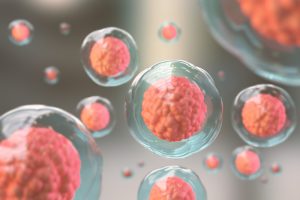 Although these embryonic stem cells are the most effective at cell diversification, there are some other forms of stem cells that do not develop even in adulthood and can provide a lesser, yet still vital, range of possibilities.
Although these embryonic stem cells are the most effective at cell diversification, there are some other forms of stem cells that do not develop even in adulthood and can provide a lesser, yet still vital, range of possibilities.
Some of these stem cells can mature into one particular kind of cell, developing as older cells grow in age and are unable to perform their function optimally.
Still, others begin to emerge only to supplant tissue that has been damaged or destroyed. These are just the two forms for which we have the most knowledge. Scientists believe that there may be certain types of stem cells which under particular genetic or environmental triggers, play a role in the beginning or propagating cancers.
Stem Cell Detection Difficult
Although they are of incredible significance, it is incredibly challenging to detect stem cells among the myriad of other cells that make up complex tissue formations.
Some years back, neurological scientist Doctor Grigori Enikolopov and his associates invented a new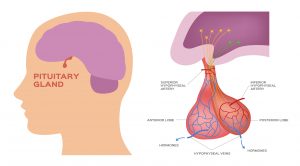 way to locate the stem cells which develop into new brain cells that are hidden in the complex arrangement of brain tissue.
way to locate the stem cells which develop into new brain cells that are hidden in the complex arrangement of brain tissue.
Dr. Enikolopov is a teaching member of the Cold Spring Harbor Laboratory.
Locating Stem Cells through Nestin
Scientists have already learned about a gene which is named Nestin, which is active within the undeveloped stem cells among the neurons.
The team at the Cold Spring Harbor Lab was able to augment the genetic code of laboratory mice to where areas in which Nestin developed in the cells were also programmed to emit a green glow when flashed with UV range light.
These newly engineered mice provided researchers with a critical signpost, which could direct them to stem cells that have persisted into adulthood.
Because of the initial research of Dr. Enikolopov, there are now nearly one hundred other research laboratories worldwide that are using these unique mice to locate stem cells in human beings in the muscle and liver tissues, as well as in follicles of hair and many other forms of tissue.
Examining the Pituitary
 One area where scientists have long theorized that stem cells were either active or dormant was within the pituitary gland.
One area where scientists have long theorized that stem cells were either active or dormant was within the pituitary gland.
This pea-sized organ of the brain sits near its base and is responsible for the secretion of numerous hormones that control multiple vital and non-vital processes all around the body and in nearly if not all of its organic tissues.
Mice have a slightly different developmental cycle than human beings, which allows their pituitary glands to be studied more easily.
The pituitary gland develops in the womb, but after birth, the pituitary undergoes a second spurt of growth in which the organ expands quickly and expansively.
It is theorized that this form of expansion may be related to the role of human stem cells, which persist into adulthood.
Dr. Anatoli Gleiberman is a member of the laboratory of M.G. Rosenfeld, and an esteemed pituitary specialist at UC San Diego.
Dr. Gleiberman sought out and made contact with Dr. Enikolopov and the Cold Spring Harbor Laboratory to begin an attempt at collaboration in which the two labs would pool their theories and resources to search for stem cells within the pituitary.
Stem Cells and Animal Research
The scientists then utilized the genetically modified mice to identify cells within the frontal lobe of the pituitary, which contains Nestin and could potentially harbor Adult Stem Cells.
This location, known as the anterior pituitary, is where Human Growth Hormone is secreted and is also where scientists had evidence that these stem cells likely were somewhere in this area.
After locating areas that could potentially contain these stem cells, they used other scientific methods to conclude which areas of the pituitary indeed included real adult stem cells.
Dr. Enikolopov explains that in the human pituitary gland, six primary cell lineages make up every cell within the developed pituitary gland.
He also says it is possible to prove that one form of adult stem cell present within the pituitary is a progenitor cell that can grow according to all six evolutionary pathways. Each of these six cells at maturity can produce a different hormone.
A Certain Sort of Stem Cell
Dr. Enikolopov says that the stem cells of the pituitary gland behave differently than those that we have found in most other areas of the body, which imbues them with a particular significance.
He says that this specific kind of stem cell is more evolutionarily  primitive than other adult stem cells, and pituitary stem cells play an active role in development back to the early embryonic stage.
primitive than other adult stem cells, and pituitary stem cells play an active role in development back to the early embryonic stage.
They never repurpose from their initial immature state.
Further study by the Cold Spring Harbor research team provides clear evidence that the pituitary gland did not develop as a result of these stem cells, it merely housed them as the brain expanded around them.
The scientists are confident that their study shows that the pituitary gland of a fully developed mouse has two structurally similar but not entirely identical kinds of cells that produce hormones.
Some of these stem cells form during the embryonic stage, but the second kind of stem cell develops at a much later period.
They also theorize that the two different types of cells located inside the pituitary may grant the gland the ability to react differently depending upon different physiological or mental conditions.
Hormones, HGH, and the Human Psyche
Dr. Enikolopov relates that human hormones play a vital role in controlling the way that humans perceive themselves and their surroundings, and can induce or predispose 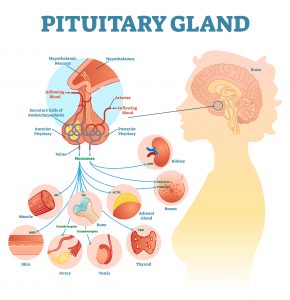 particular emotional and mental states in human beings even without appropriate cultural and environmental triggers.
particular emotional and mental states in human beings even without appropriate cultural and environmental triggers.
Dr. Enikolopov is most intimately concerned with how these phenomena affect the development of depression and stress, as this is the central aspect of his academic career.
Dr. Enikolopov says that all of these emotional responses are controlled by the pituitary gland, and if these stem cells can develop in response to specific environmental triggers, it would mean that further growth of the pituitary would have significant psychological and physiological effects on the human mind and body.
This article is an adaptation of information and data received from the Cold Spring Harbor Lab
The Conscious Evolution Institute
About the Pituitary
The pituitary gland is the primary mediator, which leads to the optimal function and maintenance of the brain and the body. The pituitary, and in particular, Human Growth Hormone, is responsible for the total and complete physiological development of the mind and the body.
Although Testosterone and Estrogen are responsible for sexual differentiation, HGH is responsible for general growth, development, and maintenance.
Studies of Adult Stem Cells are incredibly crucial to the science of Anti-Aging because these stem cells hold a central key to rehabilitation and healthiness at the cellular level.
Stem Cells The Future of Anti-Aging Therapy
 Stem Cells are the future of Hormone Replacement Therapy and Genetic Technology, which will potentially allow us to live longer than we ever thought possible.
Stem Cells are the future of Hormone Replacement Therapy and Genetic Technology, which will potentially allow us to live longer than we ever thought possible.
By unlocking the keys of stem cell biology, which causes them to develop into the many cells within our body, we will one day be able to utilize them in the great fight to extend a happy and healthy life for men and women all across the world.
Dr. Enikolopov is primarily concerned with pituitary stem cells and how they encourage the proper development of Human Growth Hormone and other factors that lead to enhanced mental health.
If we discover how these pituitary stem cells can develop into hormones such as Human Growth Hormone, we may one day be able to take HGH Hormone Replacement therapy one step further.
Rather than merely providing Bio-Identical Human Growth Hormone injections, we may one day be able to spur the growth and rehabilitation of the pituitary, restoring it to more optimal function through the use of stem cells.
Hormone Replacement Therapy The Best Anti-Aging Treatment Available in the World Today
Until then, Human Growth Hormone Replacement Therapy is the best option for HGH Deficiency and symptoms of hypopituitarism.
The Conscious Evolution Institute has a staff of highly qualified physicians and specialists, which provide the highest quality Hormone Replacement Therapies on the market today.
If you would like to know more about Hormone Replacement and how it can enhance your life throughout the aging process, send us an email or call us today. We have specialists standing by who want nothing more than to improve your life!
Reference
Scientists find stem cells for the first time in the pituitary
Contact Us For A Fast And Professional Response

- Sermorelin — HGH Injections Versus Sermorelin and Testosterone Therapy Programs [Last Updated On: February 20th, 2025] [Originally Added On: September 20th, 2020]
- GH-RH Antagonists May be Beneficial in Treating Malignant Melanomas [Last Updated On: April 23rd, 2025] [Originally Added On: October 21st, 2020]
- Sermorelin with GHRP-6 - Hormone Doctor San Diego [Last Updated On: February 18th, 2025] [Originally Added On: October 28th, 2020]
- Get a Quick and Easy Blood Test to Look For Hormone Deficiencies [Last Updated On: May 11th, 2025] [Originally Added On: November 7th, 2020]
- Beneficial Sermorelin Injections for Men and Women: The Next Generation of HGH Restoration [Last Updated On: August 22nd, 2025] [Originally Added On: December 27th, 2020]
- What are the Benefits of Sermorelin Acetate Injections versus HGH Injections? [Last Updated On: April 21st, 2025] [Originally Added On: January 14th, 2021]
- High-Intensity Interval Training to Improve HGH Levels, Hormone Balance, and Health [Last Updated On: August 23rd, 2025] [Originally Added On: January 17th, 2021]
- Sermorelin Therapy 21st Century Injectable Human Growth Hormone Restoration [Last Updated On: May 25th, 2025] [Originally Added On: February 16th, 2021]
- Maximizing Your Sermorelin Acetate Program with Sunshine and Walking [Last Updated On: February 19th, 2025] [Originally Added On: February 18th, 2021]
- Now Is The Time To Learn About The Magic Of Sermorelin Injections [Last Updated On: April 27th, 2025] [Originally Added On: March 2nd, 2021]
- Sermorelin vs. Human Growth Hormone Therapy [Last Updated On: March 15th, 2025] [Originally Added On: April 26th, 2021]
- Does Sermorelin Work? [Last Updated On: May 27th, 2025] [Originally Added On: May 4th, 2021]
- Buy Sermorelin -- What to do When Sermorelin Arrives in the Postal Mail [Last Updated On: February 16th, 2025] [Originally Added On: May 9th, 2021]
- HGH Secretagogues, Sermorelin Injections and Growth Hormone Releasing Hormone (Hypothalamus) - Video [Last Updated On: February 18th, 2025] [Originally Added On: May 11th, 2021]
- Age Management with Sermorelin Injection Treatment [Last Updated On: March 7th, 2025] [Originally Added On: May 23rd, 2021]
- Omnitrope is a Great Option for Men or Women with HGH Deficiency [Last Updated On: January 12th, 2025] [Originally Added On: June 14th, 2021]
- The Three Best Ways to Increase Your HGH Levels [Last Updated On: January 13th, 2025] [Originally Added On: July 2nd, 2021]
- HGH Injections on the Run [Last Updated On: February 4th, 2025] [Originally Added On: May 10th, 2023]
- All You Need to Know About HRT & Osteoporosis [Last Updated On: September 13th, 2025] [Originally Added On: June 16th, 2023]
- Unlocking the Elixir of Youth: Revealing the Untold Potential of Sermorelin [Last Updated On: February 25th, 2025] [Originally Added On: February 25th, 2025]
- Regaining Youthfulness: Sermorelin’s Role in Revitalizing Your Body’s Growth Hormone [Last Updated On: February 26th, 2025] [Originally Added On: February 26th, 2025]
- Unlocking the Secret to Youthfulness: Unraveling the Impact of Sermorelin in Anti-Aging Therapy [Last Updated On: February 27th, 2025] [Originally Added On: February 27th, 2025]
- Transforming Medical Science: Sermorelin's Ascendancy In The Modern World [Last Updated On: February 28th, 2025] [Originally Added On: February 28th, 2025]
- Revitalizing Elixir of Life: An Exploration into the Efficacious Role of Sermorelin in Reigniting the Body's Innate Growth Hormone [Last Updated On: February 28th, 2025] [Originally Added On: February 28th, 2025]
- Unveiling the Future of Therapeutics: A Comprehensive Examination of Sermorelin Benefits [Last Updated On: March 1st, 2025] [Originally Added On: March 1st, 2025]
- Exploring Chronological Rejuvenation: The Role of Sermorelin in Anti-Aging Medicine [Last Updated On: March 2nd, 2025] [Originally Added On: March 2nd, 2025]
- Exploring Sermorelin: A Natural Alternative to Synthetic Growth Hormone Therapy for Enhanced Vitality and Reduced Side Effects [Last Updated On: March 3rd, 2025] [Originally Added On: March 3rd, 2025]
- Exploring Sermorelin's Role in Enhancing Vitality Among American Men [Last Updated On: March 4th, 2025] [Originally Added On: March 4th, 2025]
- Exploring Sermorelin Therapy for Aging: Benefits for American Males [Last Updated On: March 5th, 2025] [Originally Added On: March 5th, 2025]
- Exploring Sermorelin Therapy for Hormonal Imbalance in Aging Men [Last Updated On: March 6th, 2025] [Originally Added On: March 6th, 2025]
- Unlocking Sermorelin: The Natural Path to Enhanced Growth Hormone Levels in Men [Last Updated On: March 7th, 2025] [Originally Added On: March 7th, 2025]
- Unlocking the Anti-Aging Potential of Sermorelin: Benefits for Aging American Males [Last Updated On: March 8th, 2025] [Originally Added On: March 8th, 2025]
- The Regenerative Power of Sermorelin for Male Tissue Regeneration and Healthy Aging [Last Updated On: March 9th, 2025] [Originally Added On: March 9th, 2025]
- Sermorelin Therapy: Enhancing Growth Hormone for American Males' Health and Vitality [Last Updated On: March 9th, 2025] [Originally Added On: March 9th, 2025]
- Unveiling the Multifaceted Health Benefits of Sermorelin for American Men [Last Updated On: March 11th, 2025] [Originally Added On: March 11th, 2025]
- Exploring the Biochemical Wonders of Sermorelin: A Deep Dive for American Males [Last Updated On: March 12th, 2025] [Originally Added On: March 12th, 2025]
- Unlocking Vitality: The Role of Sermorelin in Boosting Natural HGH Levels in American Men [Last Updated On: March 13th, 2025] [Originally Added On: March 13th, 2025]
- Unleashing Vitality: The Transformative Power of Sermorelin in American Males [Last Updated On: March 15th, 2025] [Originally Added On: March 15th, 2025]
- Exploring the Therapeutic Potential of Sermorelin in Accelerating Recovery for American Males [Last Updated On: March 15th, 2025] [Originally Added On: March 15th, 2025]
- Sermorelin: Enhancing Growth and Vitality in American Males Through Peptide Therapy [Last Updated On: March 16th, 2025] [Originally Added On: March 16th, 2025]
- Sermorelin: Enhancing Health and Vitality in American Males Through Regenerative Medicine [Last Updated On: March 17th, 2025] [Originally Added On: March 17th, 2025]
- Sermorelin: Enhancing Longevity and Quality of Life in American Males [Last Updated On: March 17th, 2025] [Originally Added On: March 17th, 2025]
- Sermorelin: Enhancing Vitality and Health in American Males Through Hormonal Optimization [Last Updated On: March 18th, 2025] [Originally Added On: March 18th, 2025]
- Sermorelin: Enhancing Vitality and Health in American Males Through Regenerative Medicine [Last Updated On: March 18th, 2025] [Originally Added On: March 18th, 2025]
- Sermorelin Therapy: Personalized Approach to Enhancing Male Health and Vitality [Last Updated On: March 18th, 2025] [Originally Added On: March 18th, 2025]
- Sermorelin: Enhancing Vitality and Health in Aging American Men [Last Updated On: March 18th, 2025] [Originally Added On: March 18th, 2025]
- Maximizing Sermorelin Benefits: Diet, Exercise, Sleep, and Stress Management for American Males [Last Updated On: March 21st, 2025] [Originally Added On: March 21st, 2025]
- Sermorelin: Enhancing Health and Vitality in American Males Through Regenerative Medicine [Last Updated On: March 21st, 2025] [Originally Added On: March 21st, 2025]
- Sermorelin: Enhancing Vitality and Cellular Health in American Males [Last Updated On: March 21st, 2025] [Originally Added On: March 21st, 2025]
- Sermorelin: Enhancing Body Composition in American Males Safely and Effectively [Last Updated On: March 22nd, 2025] [Originally Added On: March 22nd, 2025]
- Sermorelin: Enhancing Vitality and Health in Aging American Males [Last Updated On: March 22nd, 2025] [Originally Added On: March 22nd, 2025]
- Sermorelin: Enhancing Vitality and Body Composition in American Males - Evidence and Risks [Last Updated On: March 22nd, 2025] [Originally Added On: March 22nd, 2025]
- Sermorelin vs. HGH Therapy: Benefits and Risks for American Males' Health [Last Updated On: March 22nd, 2025] [Originally Added On: March 22nd, 2025]
- Sermorelin: Enhancing Tissue Regeneration in American Males [Last Updated On: March 22nd, 2025] [Originally Added On: March 22nd, 2025]
- Sermorelin: Enhancing HGH for American Males' Health and Vitality [Last Updated On: March 23rd, 2025] [Originally Added On: March 23rd, 2025]
- Sermorelin: Enhancing Growth Hormone for American Males Across All Ages [Last Updated On: March 23rd, 2025] [Originally Added On: March 23rd, 2025]
- Sermorelin Benefits for American Men: Sleep, Stress, Growth, and Vitality Enhancement [Last Updated On: March 24th, 2025] [Originally Added On: March 24th, 2025]
- Sermorelin: Enhancing Energy, Mood, and Metabolism in American Males [Last Updated On: March 24th, 2025] [Originally Added On: March 24th, 2025]
- Sermorelin: A Natural Anti-Aging Solution for American Males [Last Updated On: March 24th, 2025] [Originally Added On: March 24th, 2025]
- Sermorelin: Enhancing Muscle Repair and Performance in American Males [Last Updated On: March 24th, 2025] [Originally Added On: March 24th, 2025]
- Sermorelin: Enhancing Regeneration in American Males for Health and Vitality [Last Updated On: March 24th, 2025] [Originally Added On: March 24th, 2025]
- Sermorelin: Enhancing Vitality and Graceful Aging in American Men [Last Updated On: March 24th, 2025] [Originally Added On: March 24th, 2025]
- Sermorelin: Enhancing Vitality and Health in American Males Through GH Stimulation [Last Updated On: March 24th, 2025] [Originally Added On: March 24th, 2025]
- Sermorelin: Enhancing Post-Surgical Recovery for American Males [Last Updated On: March 25th, 2025] [Originally Added On: March 25th, 2025]
- Sermorelin: Enhancing Men's Hormonal Health Holistically [Last Updated On: March 25th, 2025] [Originally Added On: March 25th, 2025]
- Sermorelin's Molecular Mechanisms and Health Benefits for American Males [Last Updated On: March 25th, 2025] [Originally Added On: March 25th, 2025]
- Sermorelin: Boosting Energy and Fat Loss in American Males [Last Updated On: March 25th, 2025] [Originally Added On: March 25th, 2025]
- Sermorelin Therapy Benefits for American Males: Muscle, Bone, Cognitive, and Metabolic Health [Last Updated On: March 25th, 2025] [Originally Added On: March 25th, 2025]
- Sermorelin: Enhancing Performance and Health in American Males [Last Updated On: March 25th, 2025] [Originally Added On: March 25th, 2025]
- Sermorelin: Transforming Chronic Fatigue into Fitness for American Men [Last Updated On: March 25th, 2025] [Originally Added On: March 25th, 2025]
- Sermorelin: Boosting Metabolism and Vitality in American Males [Last Updated On: March 26th, 2025] [Originally Added On: March 26th, 2025]
- Sermorelin: Enhancing Skin, Hair, and Vitality in American Men [Last Updated On: March 26th, 2025] [Originally Added On: March 26th, 2025]
- Sermorelin: Enhancing Vitality and Health in Aging American Men [Last Updated On: March 26th, 2025] [Originally Added On: March 26th, 2025]
- Sermorelin: Enhancing GH Production and Health in American Males [Last Updated On: March 26th, 2025] [Originally Added On: March 26th, 2025]
- Sermorelin: Enhancing Hormonal Health and Vitality in American Men [Last Updated On: March 26th, 2025] [Originally Added On: March 26th, 2025]
- Sermorelin: Enhancing Vitality and Health in American Males Through GH Stimulation [Last Updated On: March 27th, 2025] [Originally Added On: March 27th, 2025]
- Sermorelin: Revolutionizing Anti-Aging for American Males with GH Enhancement [Last Updated On: March 27th, 2025] [Originally Added On: March 27th, 2025]
- Sermorelin Therapy: A Promising HRT Option for Aging American Males [Last Updated On: March 27th, 2025] [Originally Added On: March 27th, 2025]
- Sermorelin: Enhancing Recovery and Performance in American Male Athletes [Last Updated On: March 27th, 2025] [Originally Added On: March 27th, 2025]
- Sermorelin Therapy Enhanced by Diet and Exercise for American Males' Health [Last Updated On: March 27th, 2025] [Originally Added On: March 27th, 2025]
